Selected Articles by Andrea Stefano Malvano
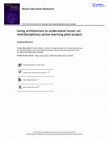
Music Education Research, 2023
Few university students in Italy today possess the necessary skills to read a musical score. Cons... more Few university students in Italy today possess the necessary skills to read a musical score. Consequently, alternative strategies are needed in order to visualizeand hence to memorisemusic. This is the main reason underpinning the pilot laboratory of musical architecture, which was launched in 2019 as university workshop thanks to the collaboration of Matteo Pericoli. The educational project's objective did not consist in the investigation of the stylistic analogies between architecture and music, but rather in the utilization of a plastic discipline in order to stimulate students to reflect upon musical writing, and to arrive to the point of creating three-dimensional models of the analysed compositions. The instruction of this teaching unit was based on the principles of brainstorming, peer learning, processing and the drawing up of a report of the acquired knowledge. The models created during the didactic module made it possible for the students to give an architectural form to musical solutions and concepts of a varying complexity, which facilitated their related visualization. The project demonstrated what advantages might be derived from tools which are alternatives to the musical score in order to photograph specific aspects of musical writing.
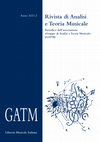
Rivista di Analisi e Teoria Musicale, 2022
This paper intends to demonstrate how the tritone in the Debussy’s Sonata for Flute, Viola and Ha... more This paper intends to demonstrate how the tritone in the Debussy’s Sonata for Flute, Viola and Harp becomes a tool of the memory, capable of revealing an underlying cyclical unity. The analysis consolidates Jean-Louis Leleu's insights (Leleu 2017), reinterpreting the function of some recurring intervals in the construction of the Sonata. What emerges is a path of progressive revelation of a few supporting elements, in particular the α interval [6-0], which gradually shed their themes to reveal a distinctive identity. So far the cyclical nature of the work has been evaluated only with regard to the resumption of the theme of the Pastorale in the epilogue. But the analysis of this paper highlights a much denser network of links, which tends to go beyond the thematic dimension, to favor a substantially athematic connection. Musicological studies tried to find a kinship with French research on cyclicity at the end of the XIXth century (DeVoto 2004; Wheeldon 2009). But Debussy eclipses every model, experimenting with various solutions. There is a transformation process, which leads the composer to rework some cyclical procedures that were historicized by tradition: specially the rewriting of the péroraison, which loses its melodic traceability while remaining the athematic climax of the entire work. Above all, there is a strong drive towards a form of subconscious cyclicality, which offers the listener continuous points of contact with that déjà entendu by working on connoted and perceptible cues.
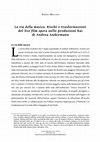
Gli Spazi della Musica, 2021
In the recent history of the Rai, La via della musica, the series of operas produced by Andrea An... more In the recent history of the Rai, La via della musica, the series of operas produced by Andrea Andermann and broadcast live on tv, merits a comprehensive study. This is a series of live film operas, cinematographic adaptations of opera, created at the very moment of performance without resorting to any form of cutting or post-production editing. An analysis of the four events, broadcast worldwide between 1992 and 2012 (Tosca nei luoghi e nelle ore di Tosca, Traviata à Paris, Rigoletto a Mantova, Cenerentola: una favola in diretta) allows for a consideration of the notion of operatic liveness, suggesting an in-depth look into the emotional reactions of the audience of a media performance, the Rai technical transformations over a period of twenty years, and the paths that different directors take within the same television project. On the one hand, the productions aim to achieve the greatest transparency and the mimesis of the viewer; on the other hand, they emphasize the uncertainty of the technological effort, exploiting the natural amplification of live television. The directors engaged by Andermann (Giuseppe Patroni Griffi, Marco Bellocchio, Carlo Verdone) adapt their choices to the media project, finding individual solutions to the broadcasting of the opera as a live film. What they all have in common, however, is the perception of risk, shared by both the performers and viewers of the experiment. The dangers of a Tosca conceived in high-tech are proportionate to the production date itself (1992). Traviata attempts an extremely acrobatic exploitation of spacial multi-dimensionality and of the steadycam-character. Rigoletto experiments with a dialogue of locations, forcing the protagonists to move unnaturally, often outside a singer’s comfort zone. Finally, Cenerentola plays the wild card of mixing opera and cartoon, attempting also the daring move of altering Rossini’s score. The article highlights the shared element of risk while analyzing the main transformations in the series that bring together liveness and live in an original utilization of television.

Il Castello di Elsinore, 2021
saggi 85 saggi Il castello di Elsinore • 83 • pp. 85-100 abstract The dialectic between doubt and... more saggi 85 saggi Il castello di Elsinore • 83 • pp. 85-100 abstract The dialectic between doubt and faith in the semi-staged version of the Matthäus-Passion by Bach with Peter Sellars' staging Among the various theatrical adaptations of the Matthäus-Passion by Johann Sebastian Bach, the recent semi-staged version of Peter Sellars from 2010 at the Philharmonie Berlin merits an in-depth study. The staging favors an inner theatricality, of thought much more than action, which investigates the contrast between the rewards and frustrations deriving from mystical quest. The investigation carried out on some of the outstanding moments of the production, together with an analysis of the score, highlights the attention given to the dialectic between doubt and faith, something that has been explored very little in pertinent studies. This work focuses on the three main choruses, the arias of the contralto and tenor and the scene of Christ's passing. The choices made by Sellars underline the aspects of a work that often chooses doubt over affirmation, expressing Bach's great sensitivity for man's insecurities when faced with the lofty heights of the Gospel. keywords Matthäus-Passion, Bach, doubt, Sellars, dramatization. La teatralità delle Passioni Fin dalle origini della moderna regia d'opera, le Passioni di Johann Sebastian Bach, nonostante la loro appartenenza a un genere oratoriale da eseguire in forma di concerto, hanno stimolato progetti per adattamenti scenici. Edward Gordon Craig, a partire dal 1900, lavorò a diversi schizzi e plastici mai realizzati della Passione secondo Matteo (Matthäus-Passion BWV 244), vedendovi uno spazio di riflessione perfetto per elaborare la sua concezione utopica del teatro musicale, fatta di sce-nografie astratte modellate solo dai movimenti della luce 1. Ferruccio Busoni decise di entrare nello stesso cantiere, avviando un progetto simile, allineato proprio alle idee di Craig ma destinato a rimanere nuovamente incompiuto 2. Il testimone fu 1. Ch. Deshoulières, La regia moderna delle opere del passato, in Enciclopedia della musica, Il sapere musicale, Einaudi, Torino 2002, p. 1053. 2. L. Alberti, La Matthäus Passion in scena secondo Ferruccio Busoni (e secondo Edward Gordon Craig), in Drammaturgie italiane del Novecento: teorie e testi («Quaderni di Musica/Realtà», n. 56), LIM, Lucca 2008, pp. 157-172.
De Musica Disserenda, 2020
In the first decade of the twentieth century Debussy experimented with different uses of the trit... more In the first decade of the twentieth century Debussy experimented with different uses of the tritone in harmony and melody. The endings of his instrumental compositions exhibit a tritonization of thematic material aimed at stimulating a comparison between past and present. In contrast to other French composers, Debussy prefers latent musical reminiscences
to explicit connections, in order to slip under the listener’s conscious perception.
Opéra National de Paris, 2020
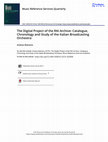
Music Reference Services Quarterly, 2020
The RAI music archive, located at the “A. Toscanini” Auditorium of Turin (Italy), contains five d... more The RAI music archive, located at the “A. Toscanini” Auditorium of Turin (Italy), contains five different types of documents: a valuable collection of rare, autographed manuscripts (letters and scores); printed music of symphonic and entertainment repertoire; a historical collection of opera librettos; an enormous corpus of arrangements for radiophonic orchestras; and the collection of concert programmes from the nineteen-fifties to the present. All of this material, practically unknown to the musicological community, was catalogued according to internationally adopted standards and has been the subject of a partial digitization. The collected information is now accessible on line (www.osn.teche.rai.it), thanks to the digital intervention of Rai Teche experts. The on line publication of the catalogued records made possible studies in various fields: the philological analysis and historical contextualization of the manuscripts preserved in the “Autographs and Rare Manuscripts” fund; a research on the repertoire of the arrangements for radiophonic orchestras; a complete history of Rai concerts performed in Turin; a series of studies about the activities of the RAI orchestras. The project, funded by MIUR (Ministero dell’Istruzione, dell’Università e della Ricerca) was completed between 2012 and 2016.
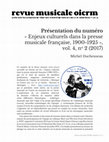
Revue musicale OICRM, 2017
This article focuses on the musical processes used by Ravel to create emotional identification be... more This article focuses on the musical processes used by Ravel to create emotional identification between characters and listeners in L’enfant et les sortilèges. Methodology consists in merging reception and analysis, using the sensitivity of the audience at the first performance, to reach some reactions that could be ignored by the modern listener. The study considers some parts of the opera that could be relevant to the topic: « Ding, ding, ding » (l’Horloge), « Toi, le coeur de la rose » (l’Enfant), « La cage, c’était pour mieux voir ta prestesse » (l’Écureuil). The analysis of these scenes shows that instruments used by Ravel to activate empathy with the audience create a distance from the poetic idea expressed in the previous opera L’heure espagnole. The final part of the article is focused on the comparison between L’enfant et les sortilèges and the Histoires naturelles, establishing a parallelism among temperaments and emotional profiles of the anthropomorphic animals. The results of the research reveal a huge change in prospective while composing L’enfant et les sortilèges, in defining strategies used by Ravel in emotional communication with listeners.
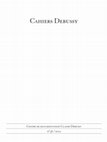
Cahiers Debussy, 2012
Claude Debussy séjourna quelques jours à Turin en juin 1911: il avait été invité pour diriger un... more Claude Debussy séjourna quelques jours à Turin en juin 1911: il avait été invité pour diriger un concert dans le milieu de l’Exposition Internationale. L’évènement est cité dans quelques études, dédiés soit à la réception de Debussy en Italie soit aux activités organisées par le comité directif de l’Exposition. Cependant il manque un travail qui reconstruise avec précision les faits de cette brève tournée, et qui puisse surtout évaluer les conséquences de l’épisode sur la sensibilité du public de la ville de Turin. Le cadre historique confirme certains problèmes relatifs à l’organisation du concert: en particulier l’exhibition peu incisive de Debussy dans la veste de directeur d’orchestre. Mais l’analyse de certaines donnés repérées dans l’archive historique du quotidien «La Stampa» nous démontre une remarquable augmentation de l’intérêt envers le compositeur français exactement à partir de cette fugace apparition: au cours des quatre années qui suivent, le nombre d’exécutions debussystes augmenta brusquement, exactement comme l’intérêt critique jusqu’à ce moment presque nul. Cet essai propose donc de reconstruire les faits historiques de ces jours en recourant aux témoignages des contemporains, il propose d’évaluer les impressions contenues dans la correspondance de Debussy sur le monde musical de Turin, et finalement il propose d’analyser le soudain changement de goût parmi le public local - exactement en correspondance de 1911 - en réfléchissant sur les œuvres écrites par les musiciens et les intellectuels qui devinrent ensuite les grands promoteurs de Debussy à Turin et en Italie (en particulier Vittorio Gui, Arturo Toscanini, Federigo Bufaletti, Guido Maggiorino Gatti, Leone Sinigaglia, Enrico Thovez, Andrea della Corte, Ettore Marroni, Piero Coppola).
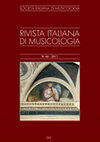
Rivista Italiana di Musicologia, 2011
The paper aims to investigate the ‘ritardando’, commonly entered in
the performance practice, tha... more The paper aims to investigate the ‘ritardando’, commonly entered in
the performance practice, that one source report at the end of Fêtes,
just before an episode in time Un peu retenu (bars 252-265). The
indication does not appear either in the autograph, or in early press
drafts, nor in the scores published between 1900 (Fromont) and 1999
(Durand); but it is present in a secondary source, a printed score
currently kept at the Fondation Royaumont, in a lot of handwritten
notes that scholars believe autograph. This document, however,
deserves to be investigated further, because it reveals contributions
from two different hands, and the tempo indication in question seems
to mark a different handwriting from that of Debussy. The score was a
reference text for many conductors of the twentieth century, and may
have influenced the performance practice, but that ‘ritardando’ must
be evaluated carefully by performers and scholars, both because it
could be the result of an idea not by the author, both because it might
compromise the delicate work on memory elaborated by the composer
in the episode Un peu retenu: currently there is a danger of neglecting
a process that approaches the writing of Debussy to the research done
by Marcel Proust about mémoire involontaire.
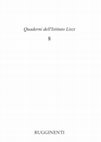
Quaderni dell’Istituto Liszt, 2009
The author compares the symphonic poem Ce qu’on entend sur la montagne by Franz Liszt and that of... more The author compares the symphonic poem Ce qu’on entend sur la montagne by Franz Liszt and that of César Franck from different points of
view, without denying Liszt’s paternity of the genre. The negative critical
position of French literature on the historical role of Franck’s symphonic
poem is possibly due to the fact that Franck himself did not give great
importance to this piece.
Liszt and Franck met in Paris 1837 and shared many aspects of the
French culture of their time. It is revealing that both chose V. Hugo’s
poetry for a symphonic poem and for a Chanson (S’il est un charmant
gazon, 1844).
In both symphonic poems there are several common aspects, and
especially the presence of three “main subjects”: Hymn to God, human
lamentation, presence of the sea. Also the musical language expressing
such “themes” is often similar, for instance: large episodes lacking a clear
tonal centre, the baroque “figure of lamentation” in the melody and the
musical form of the Chorale.

Nuova Rivista Italiana di Musicologia, 2008
Vraiment la musique aurait due être une science hermétique, gardée par des textes d’une interprét... more Vraiment la musique aurait due être une science hermétique, gardée par des textes d’une interprétation tellement longue et difficile qu’elle aurait certainement découragé le troupeau de gens qui s’en servent avec la désinvolture que l’on met à se servir d’un mouchoir de poche ! Or, et en outre, au lieu de chercher à répandre dans le public, je propose la fondation d’une « Société d’Esotérisme Musical ». (C. Debussy, Correspondance 1884-1918, Paris, Hermann 1993, p. 86)
Qu’est-ce que Debussy souhaitait dire, lorsqu’il parlait de Société d’Esotérisme Musical ? Les documents du temps, ses rapports avec Jules Bois ou Edmond Bailly nous confirment qu’il était très fasciné par l’occultisme rosicrucien, par le satanisme et par les mysticismes de l’est. L’ésotérisme pour Debussy était une conditio sine qua non de la réflexion esthétique. Mais quelles étaient les formes de sa pensée ésotérique, lorsqu’il travaillait sur la musique ? Roy Howat a cherché à trouver des correspondances entre les intérêts pour la numérologie pythagorique du circule de Bailly et le retour de la section dorée dans les partitions de Debussy (R. Howat, Debussy in Proportion: A Musical Analysis, Cambridge, Cambridge University Press 1983). Mais l’ésotérisme debussyste dépassait la volonté de transplanter les systèmes idéologiques des traditions occultes dans la musique ; ses racines étaient poussées aux sources d’une conception de l’art, destiné à la compréhension d’une élite sélectionnée. Debussy pensait à « un Art pour cinq personnes » (C. Debussy, Correspondance 1884-1918 cit., p. 56) : sa musique ne devait pas réfléchir l’identité culturelle d’une précise société d’occultisme, mais la matrice même de la pensée ésotérique. Les références à la mémoire involontaire, aux souvenirs ouverts, aux images cachées dans l’inconscient reflètent une poétique reposée sur l’importance d’une audition libre, privée de toute imposition préconstituée. Le contact secret avec le public se révèle en passant par les catégories de la fruition, en produisant des analogies imprévisibles entre le niveau de l’expérience et celui de l’imagination. Les comptes rendus sur la presse du début du XXème siècle montrent que seule une petite portion des auditeurs avait la sensibilité nécessaire pour accéder aux secrets de cet art : c’était là, dans cette élite choisie naturellement par sa musique, que Debussy cherchait à créer sa petite Société d’Esotérisme Musical.
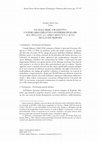
Musica Docta, 2018
Il percorso didattico è dedicato al Prélude à l’après-midi d’un faune di Claude Debussy (1892-189... more Il percorso didattico è dedicato al Prélude à l’après-midi d’un faune di Claude Debussy (1892-1894) con l’obiettivo di creare specifiche competenze in merito all’ascolto della produzione francese di fine Ottocento. Il riferimento letterario all’Après-midi d’un faune di Stéphane Mallarmé consente di assegnare all’unità un taglio interdisciplinare, stimolando gli studenti ad assimilare i concetti di simbolismo e impressionismo. Il modulo è destinato agli alunni iscritti all’ultimo anno della scuola secondaria di secondo grado (in particolare i licei), e richiede una collaborazione con i docenti di lettere, storia, lingua e arte. Il percorso prevede un’analisi del testo di Mallarmé in funzione della musica composta da Debussy, e una guida all’ascolto basata sui principi metodologici della segmentazione, della ripetizione, della stratificazione e della verbalizzazione. Tra le proposte di sviluppo interdisciplinare si suggerisce un confronto ragionato con il film di animazione Allegro non troppo, realizzato da Bruno Bozzetto nel 1976 sulla musica del Prélude à l’après-midi d’un faune.
Nuova Rivista Musicale Italiana, 2011
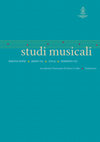
Studi Musicali, 2014
There is a semantic feature in Jeux, currently neglected by the relevant literature, that deserve... more There is a semantic feature in Jeux, currently neglected by the relevant literature, that deserves to be investigated with analytical methodology: the question of the ties between music writing and the erotic sphere. Sensuality was a primary source of inspiration in Paris in the early twentieth century, and it heavily influenced all of Debussy’s music. But Jeux was the work that knew how to stimulate the erotic imagination of the first listeners most intensely. The subject, with its explicit reference to the triangle of the ménage à trois, is animated by sensual tension. Yet there are also many elements of the score that express a tie with the notion of flirtation, understood as a preliminary, illogical and contradictory phase of the amorous experience. The timbre, rightly defined as frémissant by the first critics, expresses at once the ardor of strong erotic tension and the indecision with which one explores a new emotion. The circular thematicity, which always returns to itself, recalls the confusion of one who is experiencing the early stage of falling in love. The morphology shows a continuous contact between the notions of instant and instinct. The relationship between a form that is always looking forward and a thematicity that always rotates on itself expresses the indecisions typical of the initial phase of a courtship. And an analysis of the harmony shows a systematic refusal of a single center of gravity, which embodies the essence of sensuality as seen in its most conflictual and indecisive phase. None of these characteristics highlight the superficial parallels between the composer’s writing and the choreographer’s indications, but rather an intimate bond rooted in the primitive semantics of the game of love.

Studi Musicali, 2008
Dallo studio condotto sulle composizioni pianistiche in forma di fuga o di preludio e fuga nate n... more Dallo studio condotto sulle composizioni pianistiche in forma di fuga o di preludio e fuga nate nell’Ottocento emergono due modalità fondamentali di rivisitazione del modello formale derivato dalla tradizione:
♣ l’esercizio di stile basato sull’imitazione di un linguaggio e di una forma antichi (Carl Czerny, La scuola della fuga op. 400; Johann Nepomuk Hummel, Fughe op. 7; Antonin Reicha, Trentasei fughe composte su un nuovo sistema; Robert Schumann, Fughe op. 72; Felix Mendelssohn-Bartholdy, Preludi e Fuga op. 35);
♣ l’aggiornamento della forma antica alle esigenze stilistiche contemporanee (Liszt, Fantasia e Fuga su BACH; Anton Rubinstein, Preludi e fughe op. 53).
Preludio Corale e Fuga di César Franck è una composizione difficilmente classificabile all’interno di questo panorama stilistico. L’analisi della partitura consente di rilevare formule pianistiche e compositive maturate nel secondo Ottocento; ma prova nello stesso tempo una decisa propensione alla conservazione dei tratti distintivi della forma scelta. Franck rifiuta l’imitazione stilistica di modelli antichi proposta dalla prima generazione romantica, ma non si dimostra nemmeno attratto dall’atteggiamento sovversivo proposto da Liszt. Preludio Corale e Fuga è un’opera perfettamente inserita nel suo tempo, pur essendo dotata di quelle radici formali che mancano agli esempi di Liszt. Franck raggiunge un equilibrio tra spinte innovative e tendenze conservative sconosciuto alla maggior parte dei preludi e fuga per pianoforte dell’Ottocento: riesce ad aggiornare, senza deformare, l’impostazione formale mediata dalla tradizione.
Queste caratteristiche finora non sono state messe in adeguato risalto dalla letteratura musicologica dedicata a Franck e collocano Preludio Corale e Fuga in una posizione estremamente originale all’interno del repertorio pianistico di fine Ottocento.
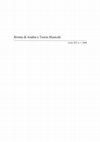
Rivista di Analisi e Teoria Musicale, 2008
Il saggio è dedicato all’orchestrazione elaborata da Webern nel 1934 a partire dal Ricercare a se... more Il saggio è dedicato all’orchestrazione elaborata da Webern nel 1934 a partire dal Ricercare a sei voci di Bach. L’operazione è stata spesso considerata dalla ricerca musicologica un perfetto esempio di analisi. Ma Webern cerca anche di riscrivere le strutture del contrappunto avvalendosi di una risorsa nuova, e apparentemente in contraddizione con la stessa categoria polifonica; la Klangfarbenmelodie. L’analisi della partitura mette in luce due fasi: prima la distruzione dell’indipendenza delle parti tramite la scomposizione timbrica, poi la ricostruzione con nuovi strumenti della grammatica contrappuntistica antica. Le nozioni di esposizione, di soggetto, di controsoggetto, di distribuzione formale non sono affatto rinnegate, ma riviste sulla base della frammentazione timbrica; e il risultato è un lavoro che riesce a trovare un punto di contatto unico nella storia del Novecento tra tradizione e innovazione.
Nuova Rivista Musicale Italiana, 2009

Musica/Realtà, 2010
La storia pratica della sonata per pianoforte in Francia, nel corso dell’Ottocento, è estremament... more La storia pratica della sonata per pianoforte in Francia, nel corso dell’Ottocento, è estremamente povera: i lavori di Louis-Théodore Gouvy, Georges-Jean Pfeiffer o Raoul Pugno non sono mai stati in grado di lasciare un segno incisivo. E anche la trattatistica maturata a Parigi a cavallo tra i due secoli cerca a tutti i costi di trovare un posto ai francesi in una storia sistematicamente scritta da altri. Le osservazioni contenute nei saggi di Vincent d’Indy, Blanche Selva o nell’Envyclopédie de la musique di Albert de Lavignac si intestardiscono a reperire una specificità francese nelle origini (la suite) e nell’avanguardia (la ciclicità e l’idealismo) della sonata; ma si tratta di opinioni molto discutibili, nate più con l’obiettivo di rivedere il passato a lavori ultimati, che di creare i presupposti per la nascita di nuovi lavori sonatistici. L’affermazione fatta da Pierre Lalo nel 1901 sembrava pertanto il naturale epilogo critico di una situazione che la pratica aveva da sempre relegato in una posizione marginale: «La sonata muore, la sonate è morta».
Fu da quel terreno ormai apparentemente sterile che nel 1901 germogliò la Sonata per pianoforte di Paul Dukas: un lavoro che suscitò una risonanza enorme, scomodando anche gli elogi illustri, tra gli altri, di Claude Debussy, Willy, Pierre Lalo e Pierre de Bréville. Perché tanto entusiasmo allora attorno a un lavoro nato fuori tempo massimo e che non assecondava il pensiero dei teorici in merito alla specificità francese del linguaggio sonatistico? La Sonata di Dukas difatti non é un’opera ciclica, né idealistica nel senso d’indyano del termine.
La risposta risiede nell’analisi della partitura, che evidenzia un punto di convergenza organico tra pianismo francese e sonatismo di matrice austro-tedesca: la struttura formale del classicismo viennese, il lavoro sull’immaginazione dei simbolisti, le raffinatezze armoniche (mai violente) degli impressionisti, l’impronta demoniaca di Saint-Saëns, il virtuosismo di Liszt, il lirismo di d’Indy, la vettorialità di Franck e Beethoven, la vocazione alla scrittura orchestrale di Berlioz. Dukas inventa il genere francese della sonata pianistica, trovando il modo di esprimersi con un linguaggio tipicamente francese, senza tuttavia venire meno alle convenzioni formali tramandate dal classicismo. Un’operazione del genere, particolarmente coraggiosa negli anni di Debussy e Ravel, meritava il sostegno di tutti i contemporanei; anche se, probabilmente era altrettanto chiaro a tutti, che la composizione di Dukas poteva solo più ambire a scrivere l’ultima pagina di un libro totalmente curato da un’altra cultura musicale.
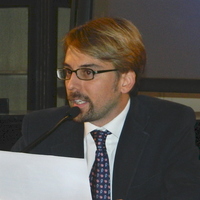
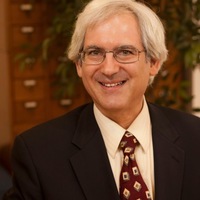
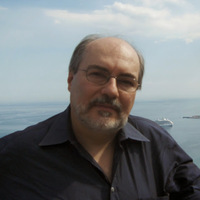
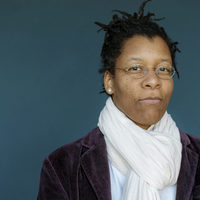





Uploads
Selected Articles by Andrea Stefano Malvano
to explicit connections, in order to slip under the listener’s conscious perception.
the performance practice, that one source report at the end of Fêtes,
just before an episode in time Un peu retenu (bars 252-265). The
indication does not appear either in the autograph, or in early press
drafts, nor in the scores published between 1900 (Fromont) and 1999
(Durand); but it is present in a secondary source, a printed score
currently kept at the Fondation Royaumont, in a lot of handwritten
notes that scholars believe autograph. This document, however,
deserves to be investigated further, because it reveals contributions
from two different hands, and the tempo indication in question seems
to mark a different handwriting from that of Debussy. The score was a
reference text for many conductors of the twentieth century, and may
have influenced the performance practice, but that ‘ritardando’ must
be evaluated carefully by performers and scholars, both because it
could be the result of an idea not by the author, both because it might
compromise the delicate work on memory elaborated by the composer
in the episode Un peu retenu: currently there is a danger of neglecting
a process that approaches the writing of Debussy to the research done
by Marcel Proust about mémoire involontaire.
view, without denying Liszt’s paternity of the genre. The negative critical
position of French literature on the historical role of Franck’s symphonic
poem is possibly due to the fact that Franck himself did not give great
importance to this piece.
Liszt and Franck met in Paris 1837 and shared many aspects of the
French culture of their time. It is revealing that both chose V. Hugo’s
poetry for a symphonic poem and for a Chanson (S’il est un charmant
gazon, 1844).
In both symphonic poems there are several common aspects, and
especially the presence of three “main subjects”: Hymn to God, human
lamentation, presence of the sea. Also the musical language expressing
such “themes” is often similar, for instance: large episodes lacking a clear
tonal centre, the baroque “figure of lamentation” in the melody and the
musical form of the Chorale.
Qu’est-ce que Debussy souhaitait dire, lorsqu’il parlait de Société d’Esotérisme Musical ? Les documents du temps, ses rapports avec Jules Bois ou Edmond Bailly nous confirment qu’il était très fasciné par l’occultisme rosicrucien, par le satanisme et par les mysticismes de l’est. L’ésotérisme pour Debussy était une conditio sine qua non de la réflexion esthétique. Mais quelles étaient les formes de sa pensée ésotérique, lorsqu’il travaillait sur la musique ? Roy Howat a cherché à trouver des correspondances entre les intérêts pour la numérologie pythagorique du circule de Bailly et le retour de la section dorée dans les partitions de Debussy (R. Howat, Debussy in Proportion: A Musical Analysis, Cambridge, Cambridge University Press 1983). Mais l’ésotérisme debussyste dépassait la volonté de transplanter les systèmes idéologiques des traditions occultes dans la musique ; ses racines étaient poussées aux sources d’une conception de l’art, destiné à la compréhension d’une élite sélectionnée. Debussy pensait à « un Art pour cinq personnes » (C. Debussy, Correspondance 1884-1918 cit., p. 56) : sa musique ne devait pas réfléchir l’identité culturelle d’une précise société d’occultisme, mais la matrice même de la pensée ésotérique. Les références à la mémoire involontaire, aux souvenirs ouverts, aux images cachées dans l’inconscient reflètent une poétique reposée sur l’importance d’une audition libre, privée de toute imposition préconstituée. Le contact secret avec le public se révèle en passant par les catégories de la fruition, en produisant des analogies imprévisibles entre le niveau de l’expérience et celui de l’imagination. Les comptes rendus sur la presse du début du XXème siècle montrent que seule une petite portion des auditeurs avait la sensibilité nécessaire pour accéder aux secrets de cet art : c’était là, dans cette élite choisie naturellement par sa musique, que Debussy cherchait à créer sa petite Société d’Esotérisme Musical.
♣ l’esercizio di stile basato sull’imitazione di un linguaggio e di una forma antichi (Carl Czerny, La scuola della fuga op. 400; Johann Nepomuk Hummel, Fughe op. 7; Antonin Reicha, Trentasei fughe composte su un nuovo sistema; Robert Schumann, Fughe op. 72; Felix Mendelssohn-Bartholdy, Preludi e Fuga op. 35);
♣ l’aggiornamento della forma antica alle esigenze stilistiche contemporanee (Liszt, Fantasia e Fuga su BACH; Anton Rubinstein, Preludi e fughe op. 53).
Preludio Corale e Fuga di César Franck è una composizione difficilmente classificabile all’interno di questo panorama stilistico. L’analisi della partitura consente di rilevare formule pianistiche e compositive maturate nel secondo Ottocento; ma prova nello stesso tempo una decisa propensione alla conservazione dei tratti distintivi della forma scelta. Franck rifiuta l’imitazione stilistica di modelli antichi proposta dalla prima generazione romantica, ma non si dimostra nemmeno attratto dall’atteggiamento sovversivo proposto da Liszt. Preludio Corale e Fuga è un’opera perfettamente inserita nel suo tempo, pur essendo dotata di quelle radici formali che mancano agli esempi di Liszt. Franck raggiunge un equilibrio tra spinte innovative e tendenze conservative sconosciuto alla maggior parte dei preludi e fuga per pianoforte dell’Ottocento: riesce ad aggiornare, senza deformare, l’impostazione formale mediata dalla tradizione.
Queste caratteristiche finora non sono state messe in adeguato risalto dalla letteratura musicologica dedicata a Franck e collocano Preludio Corale e Fuga in una posizione estremamente originale all’interno del repertorio pianistico di fine Ottocento.
Fu da quel terreno ormai apparentemente sterile che nel 1901 germogliò la Sonata per pianoforte di Paul Dukas: un lavoro che suscitò una risonanza enorme, scomodando anche gli elogi illustri, tra gli altri, di Claude Debussy, Willy, Pierre Lalo e Pierre de Bréville. Perché tanto entusiasmo allora attorno a un lavoro nato fuori tempo massimo e che non assecondava il pensiero dei teorici in merito alla specificità francese del linguaggio sonatistico? La Sonata di Dukas difatti non é un’opera ciclica, né idealistica nel senso d’indyano del termine.
La risposta risiede nell’analisi della partitura, che evidenzia un punto di convergenza organico tra pianismo francese e sonatismo di matrice austro-tedesca: la struttura formale del classicismo viennese, il lavoro sull’immaginazione dei simbolisti, le raffinatezze armoniche (mai violente) degli impressionisti, l’impronta demoniaca di Saint-Saëns, il virtuosismo di Liszt, il lirismo di d’Indy, la vettorialità di Franck e Beethoven, la vocazione alla scrittura orchestrale di Berlioz. Dukas inventa il genere francese della sonata pianistica, trovando il modo di esprimersi con un linguaggio tipicamente francese, senza tuttavia venire meno alle convenzioni formali tramandate dal classicismo. Un’operazione del genere, particolarmente coraggiosa negli anni di Debussy e Ravel, meritava il sostegno di tutti i contemporanei; anche se, probabilmente era altrettanto chiaro a tutti, che la composizione di Dukas poteva solo più ambire a scrivere l’ultima pagina di un libro totalmente curato da un’altra cultura musicale.
to explicit connections, in order to slip under the listener’s conscious perception.
the performance practice, that one source report at the end of Fêtes,
just before an episode in time Un peu retenu (bars 252-265). The
indication does not appear either in the autograph, or in early press
drafts, nor in the scores published between 1900 (Fromont) and 1999
(Durand); but it is present in a secondary source, a printed score
currently kept at the Fondation Royaumont, in a lot of handwritten
notes that scholars believe autograph. This document, however,
deserves to be investigated further, because it reveals contributions
from two different hands, and the tempo indication in question seems
to mark a different handwriting from that of Debussy. The score was a
reference text for many conductors of the twentieth century, and may
have influenced the performance practice, but that ‘ritardando’ must
be evaluated carefully by performers and scholars, both because it
could be the result of an idea not by the author, both because it might
compromise the delicate work on memory elaborated by the composer
in the episode Un peu retenu: currently there is a danger of neglecting
a process that approaches the writing of Debussy to the research done
by Marcel Proust about mémoire involontaire.
view, without denying Liszt’s paternity of the genre. The negative critical
position of French literature on the historical role of Franck’s symphonic
poem is possibly due to the fact that Franck himself did not give great
importance to this piece.
Liszt and Franck met in Paris 1837 and shared many aspects of the
French culture of their time. It is revealing that both chose V. Hugo’s
poetry for a symphonic poem and for a Chanson (S’il est un charmant
gazon, 1844).
In both symphonic poems there are several common aspects, and
especially the presence of three “main subjects”: Hymn to God, human
lamentation, presence of the sea. Also the musical language expressing
such “themes” is often similar, for instance: large episodes lacking a clear
tonal centre, the baroque “figure of lamentation” in the melody and the
musical form of the Chorale.
Qu’est-ce que Debussy souhaitait dire, lorsqu’il parlait de Société d’Esotérisme Musical ? Les documents du temps, ses rapports avec Jules Bois ou Edmond Bailly nous confirment qu’il était très fasciné par l’occultisme rosicrucien, par le satanisme et par les mysticismes de l’est. L’ésotérisme pour Debussy était une conditio sine qua non de la réflexion esthétique. Mais quelles étaient les formes de sa pensée ésotérique, lorsqu’il travaillait sur la musique ? Roy Howat a cherché à trouver des correspondances entre les intérêts pour la numérologie pythagorique du circule de Bailly et le retour de la section dorée dans les partitions de Debussy (R. Howat, Debussy in Proportion: A Musical Analysis, Cambridge, Cambridge University Press 1983). Mais l’ésotérisme debussyste dépassait la volonté de transplanter les systèmes idéologiques des traditions occultes dans la musique ; ses racines étaient poussées aux sources d’une conception de l’art, destiné à la compréhension d’une élite sélectionnée. Debussy pensait à « un Art pour cinq personnes » (C. Debussy, Correspondance 1884-1918 cit., p. 56) : sa musique ne devait pas réfléchir l’identité culturelle d’une précise société d’occultisme, mais la matrice même de la pensée ésotérique. Les références à la mémoire involontaire, aux souvenirs ouverts, aux images cachées dans l’inconscient reflètent une poétique reposée sur l’importance d’une audition libre, privée de toute imposition préconstituée. Le contact secret avec le public se révèle en passant par les catégories de la fruition, en produisant des analogies imprévisibles entre le niveau de l’expérience et celui de l’imagination. Les comptes rendus sur la presse du début du XXème siècle montrent que seule une petite portion des auditeurs avait la sensibilité nécessaire pour accéder aux secrets de cet art : c’était là, dans cette élite choisie naturellement par sa musique, que Debussy cherchait à créer sa petite Société d’Esotérisme Musical.
♣ l’esercizio di stile basato sull’imitazione di un linguaggio e di una forma antichi (Carl Czerny, La scuola della fuga op. 400; Johann Nepomuk Hummel, Fughe op. 7; Antonin Reicha, Trentasei fughe composte su un nuovo sistema; Robert Schumann, Fughe op. 72; Felix Mendelssohn-Bartholdy, Preludi e Fuga op. 35);
♣ l’aggiornamento della forma antica alle esigenze stilistiche contemporanee (Liszt, Fantasia e Fuga su BACH; Anton Rubinstein, Preludi e fughe op. 53).
Preludio Corale e Fuga di César Franck è una composizione difficilmente classificabile all’interno di questo panorama stilistico. L’analisi della partitura consente di rilevare formule pianistiche e compositive maturate nel secondo Ottocento; ma prova nello stesso tempo una decisa propensione alla conservazione dei tratti distintivi della forma scelta. Franck rifiuta l’imitazione stilistica di modelli antichi proposta dalla prima generazione romantica, ma non si dimostra nemmeno attratto dall’atteggiamento sovversivo proposto da Liszt. Preludio Corale e Fuga è un’opera perfettamente inserita nel suo tempo, pur essendo dotata di quelle radici formali che mancano agli esempi di Liszt. Franck raggiunge un equilibrio tra spinte innovative e tendenze conservative sconosciuto alla maggior parte dei preludi e fuga per pianoforte dell’Ottocento: riesce ad aggiornare, senza deformare, l’impostazione formale mediata dalla tradizione.
Queste caratteristiche finora non sono state messe in adeguato risalto dalla letteratura musicologica dedicata a Franck e collocano Preludio Corale e Fuga in una posizione estremamente originale all’interno del repertorio pianistico di fine Ottocento.
Fu da quel terreno ormai apparentemente sterile che nel 1901 germogliò la Sonata per pianoforte di Paul Dukas: un lavoro che suscitò una risonanza enorme, scomodando anche gli elogi illustri, tra gli altri, di Claude Debussy, Willy, Pierre Lalo e Pierre de Bréville. Perché tanto entusiasmo allora attorno a un lavoro nato fuori tempo massimo e che non assecondava il pensiero dei teorici in merito alla specificità francese del linguaggio sonatistico? La Sonata di Dukas difatti non é un’opera ciclica, né idealistica nel senso d’indyano del termine.
La risposta risiede nell’analisi della partitura, che evidenzia un punto di convergenza organico tra pianismo francese e sonatismo di matrice austro-tedesca: la struttura formale del classicismo viennese, il lavoro sull’immaginazione dei simbolisti, le raffinatezze armoniche (mai violente) degli impressionisti, l’impronta demoniaca di Saint-Saëns, il virtuosismo di Liszt, il lirismo di d’Indy, la vettorialità di Franck e Beethoven, la vocazione alla scrittura orchestrale di Berlioz. Dukas inventa il genere francese della sonata pianistica, trovando il modo di esprimersi con un linguaggio tipicamente francese, senza tuttavia venire meno alle convenzioni formali tramandate dal classicismo. Un’operazione del genere, particolarmente coraggiosa negli anni di Debussy e Ravel, meritava il sostegno di tutti i contemporanei; anche se, probabilmente era altrettanto chiaro a tutti, che la composizione di Dukas poteva solo più ambire a scrivere l’ultima pagina di un libro totalmente curato da un’altra cultura musicale.
Se la trascrizione di Schumann voleva mettere maggiormente in risalto il lato poetico della composizione, Liszt, invece, sottolinea (pur senza disconoscere quello) il lato virtuosistico; egli titola giustamente questi pezzi Studi di bravura, in quanto è ben chiaro che li suona anche per brillare di fronte al pubblico (R. Schumann, Gli scritti critici, a cira di A. Cerocchi Pozzi, Milano, Ricordi-LIM 1991, I, p. 885).
Schumann identificava due anime artistiche in Paganini: da una parte un virtuoso mirabolante che esercitava facili seduzioni sulle platee delle sale da concerto; dall’altra un compositore dal «lato poetico», che rischiava di rimanere sepolto sotto le appariscenti tentazioni del virtuosismo. L’aggettivo ‘poetico’ non era certo usato in maniera sprovveduta: negli scritti di Schumann si trova solo a contatto con i nomi più ammirati (Bach, Schubert, Hoffmann, Shakespeare). Le trascrizioni schumanniane, nelle intenzioni dell’autore, dovevano esaltare proprio il Paganini-compositore, l’autore in grado di esprimere contenuti poetici attraverso la sua scrittura musicale; qualcosa che accadeva sulla carta, ancor prima che si aprissero le porte del palcoscenico. L’atteggiamento era piuttosto anomalo rispetto alla comune recezione paganiniana della prima metà dell’Ottocento. Ma in che cosa consisteva quel misterioso «lato poetico» che Schumann leggeva nel tessuto compositivo dei Capricci? Le analisi degli Studi op. 3 e op. 10 ci aiutano a rispondere a questa domanda, testimoniando una recezione che prediligeva sistematicamente l’invenzione primigenia alla trascrizione del virtuosismo.